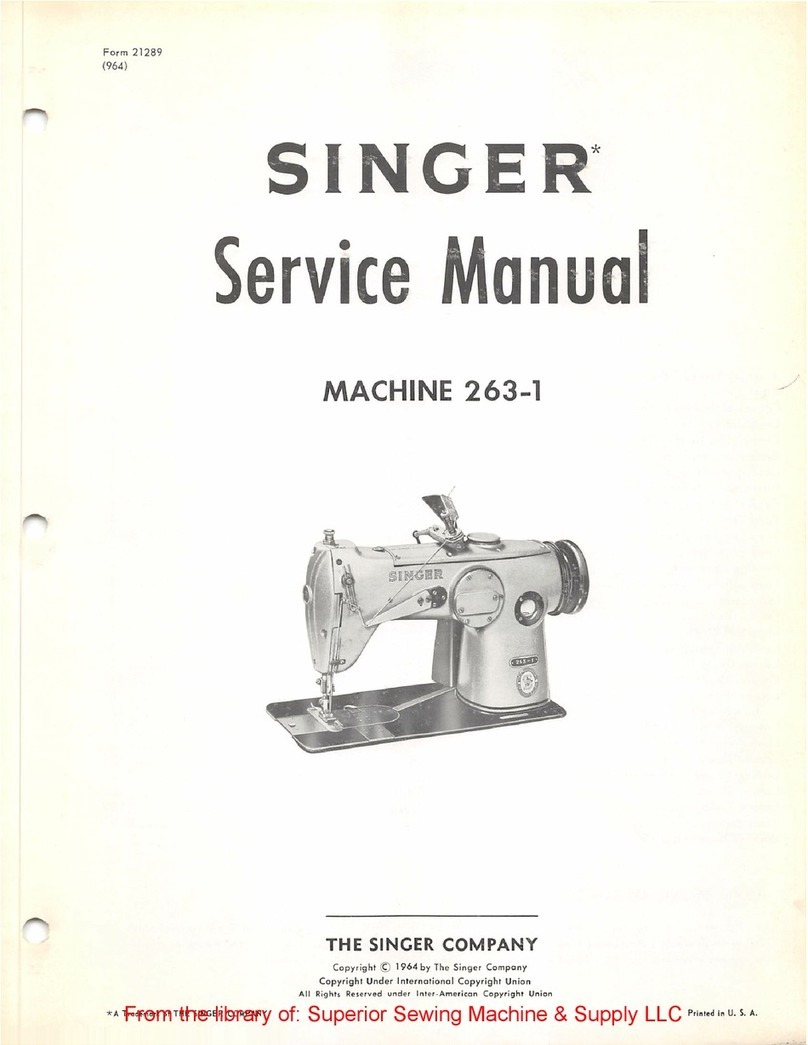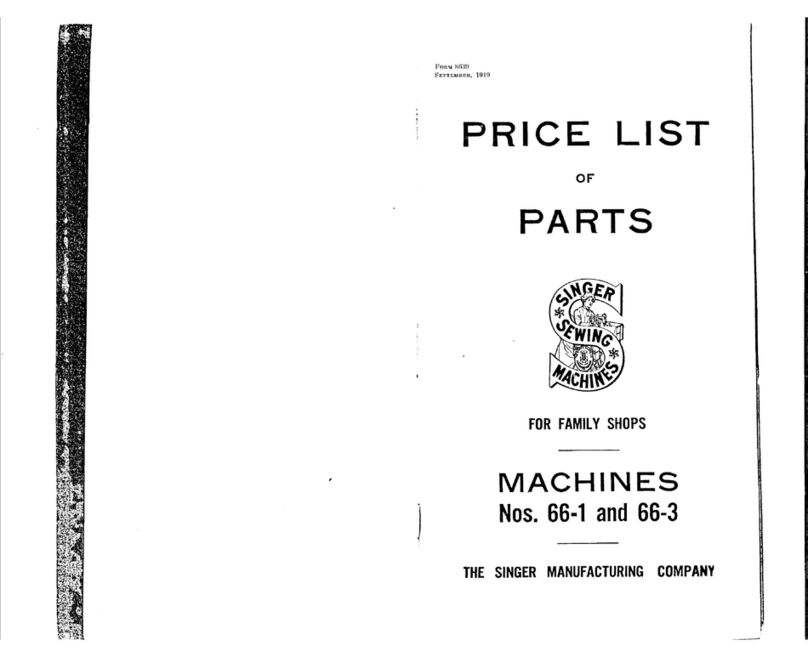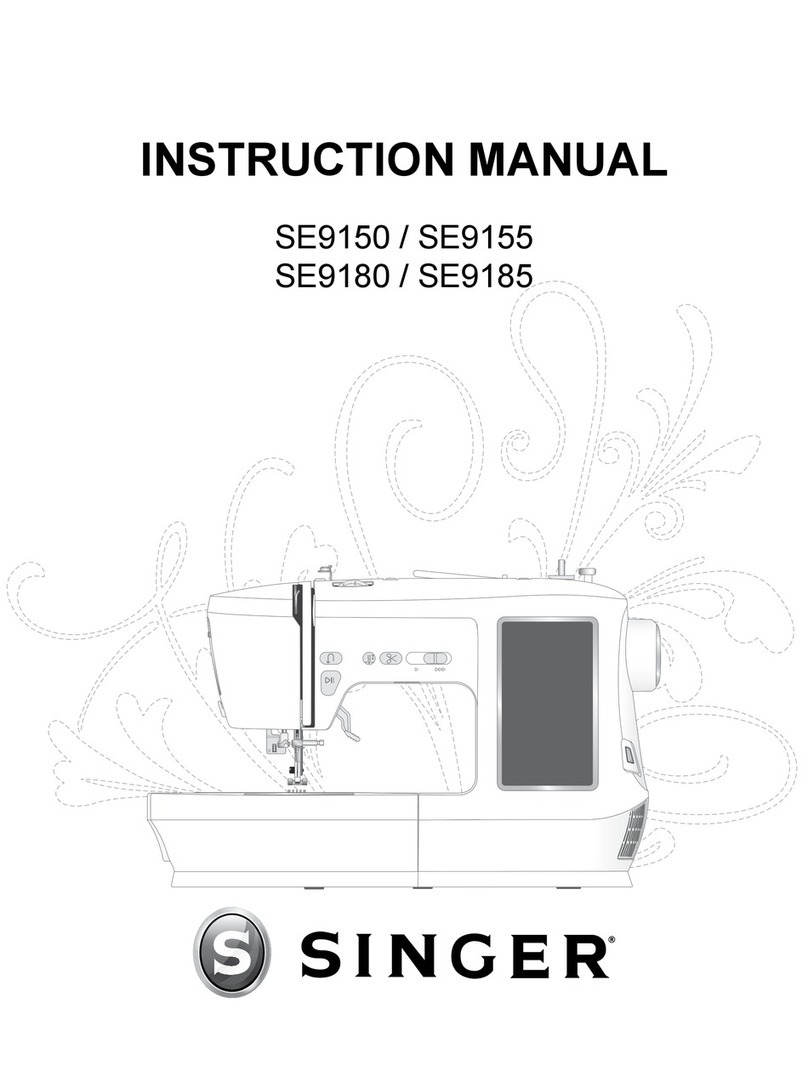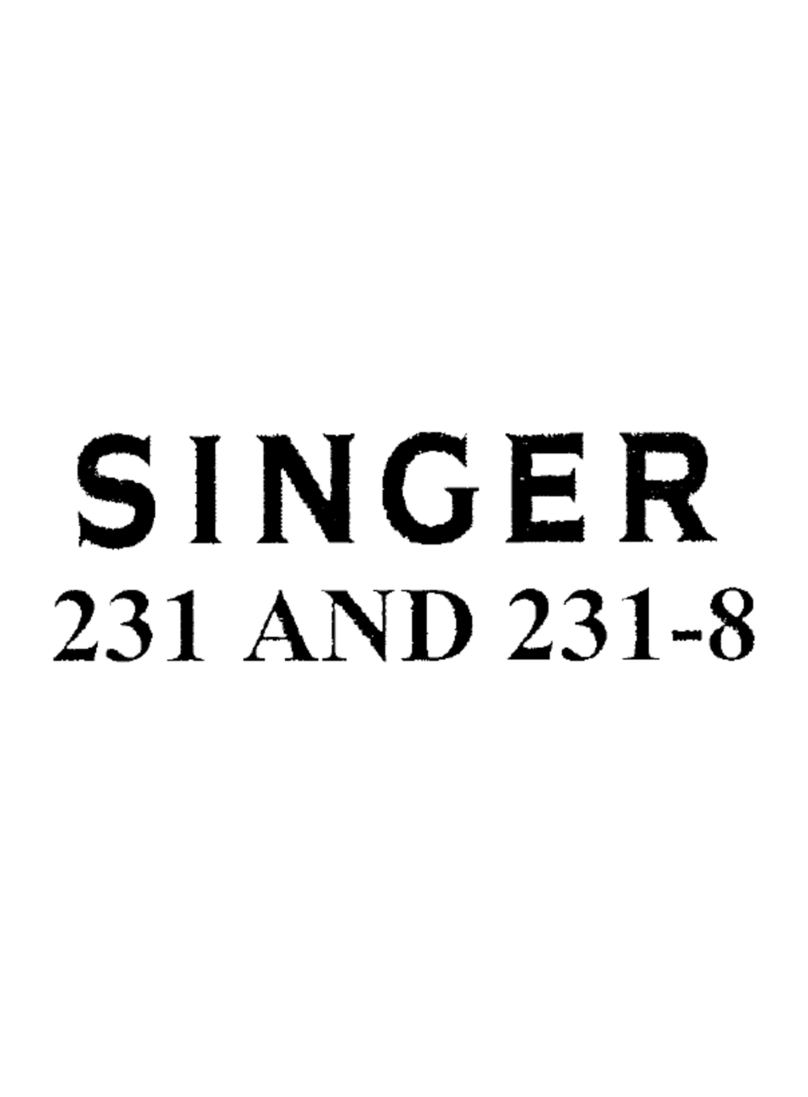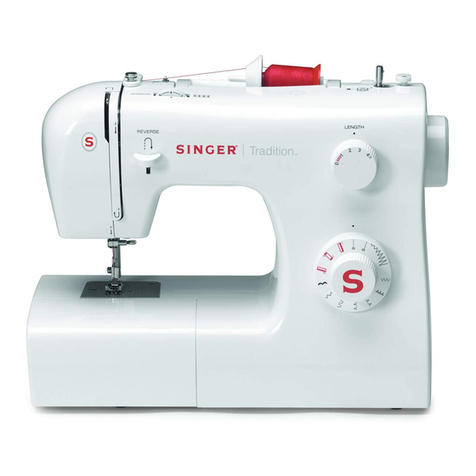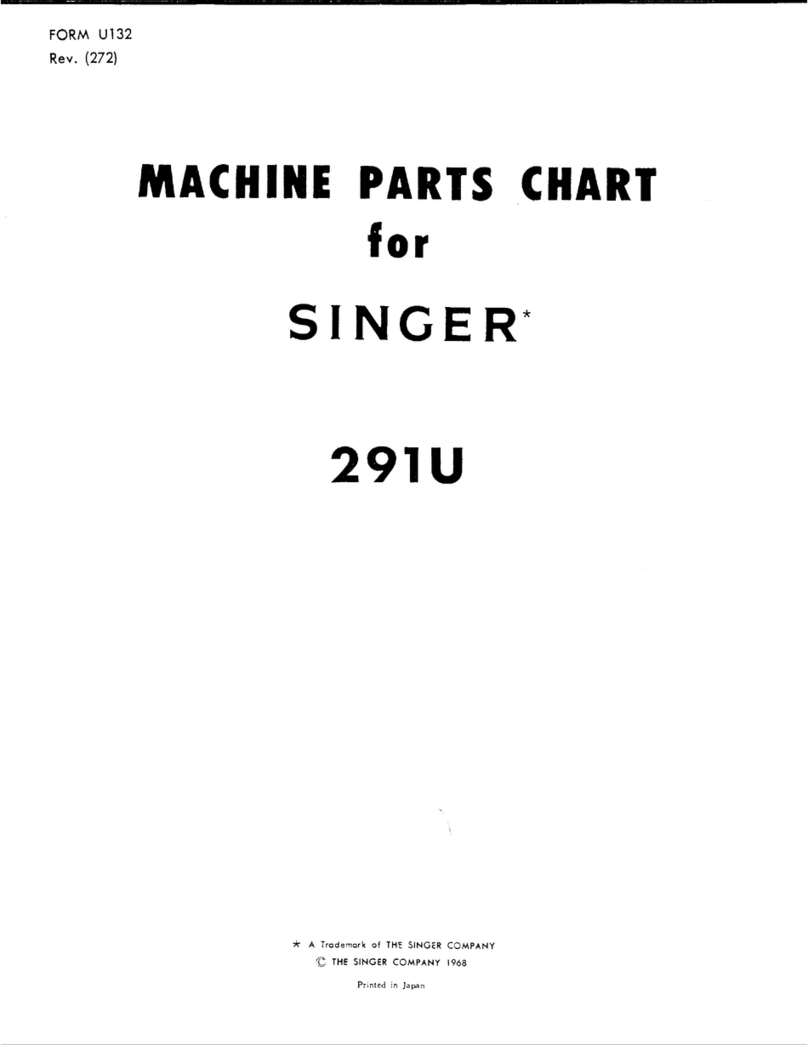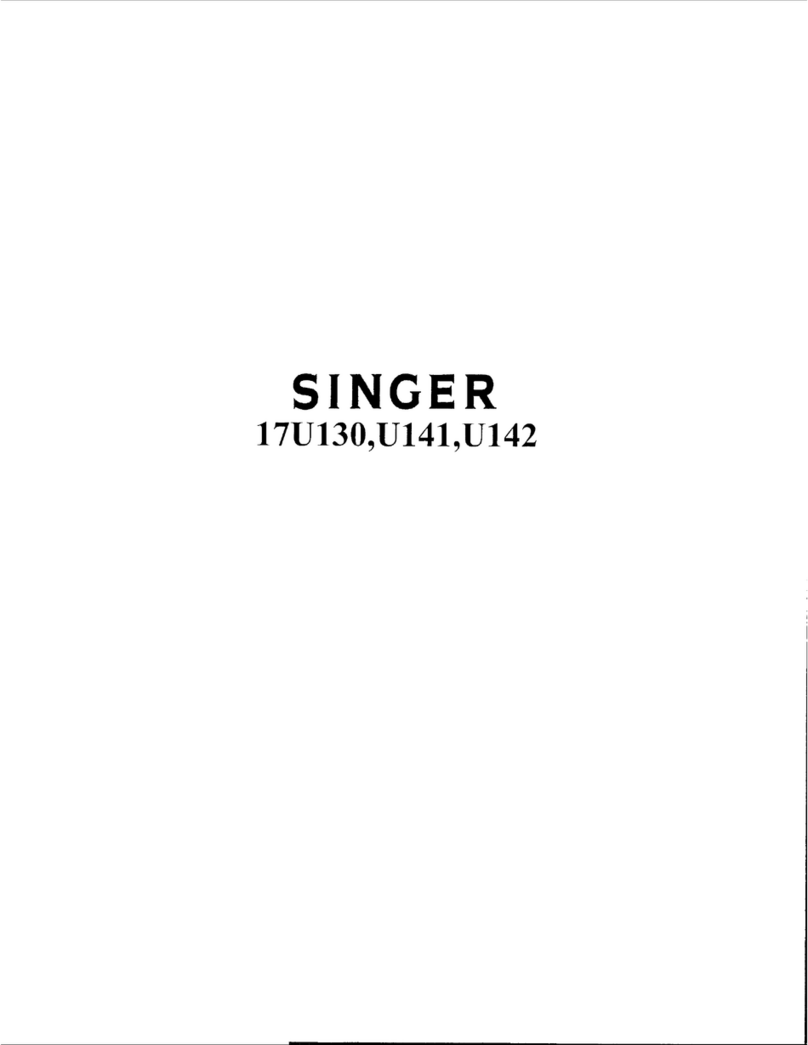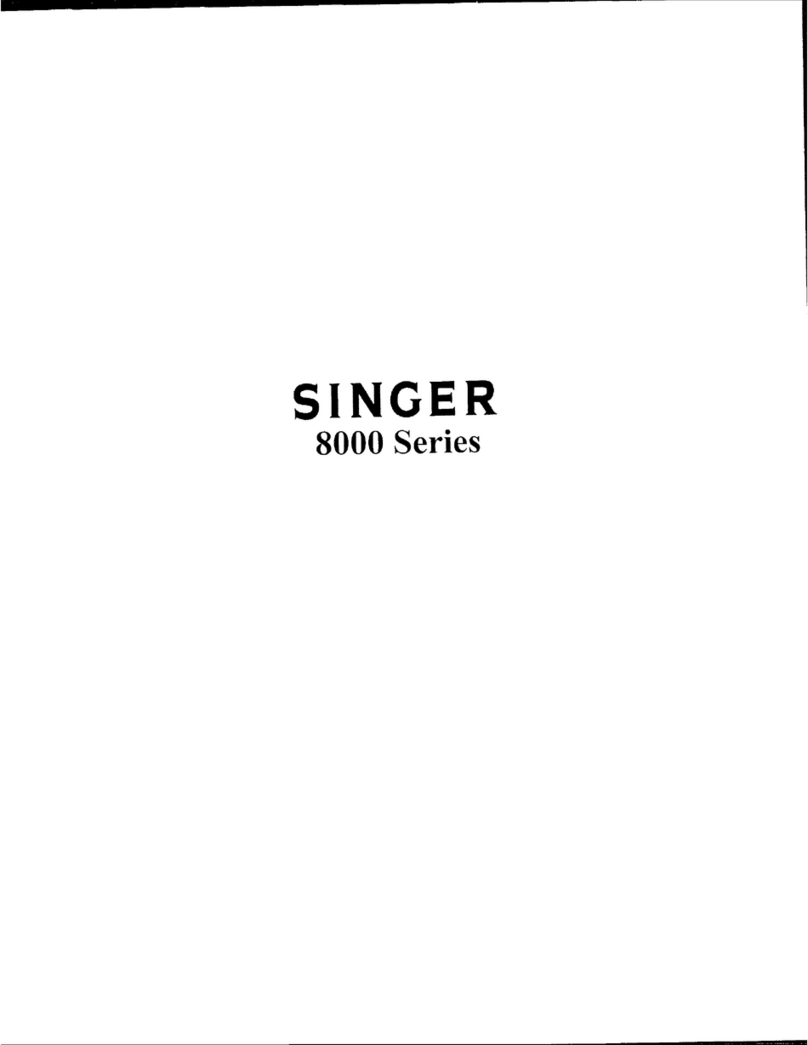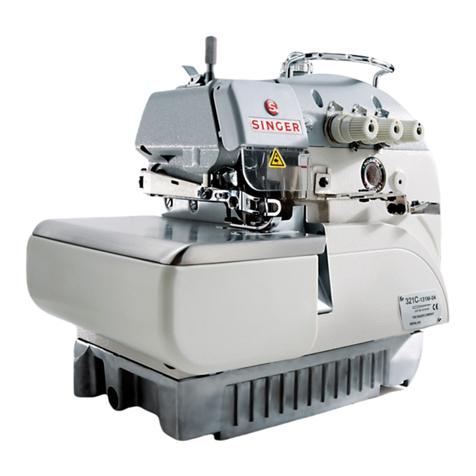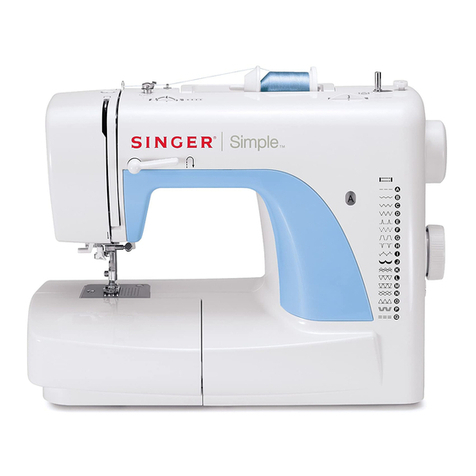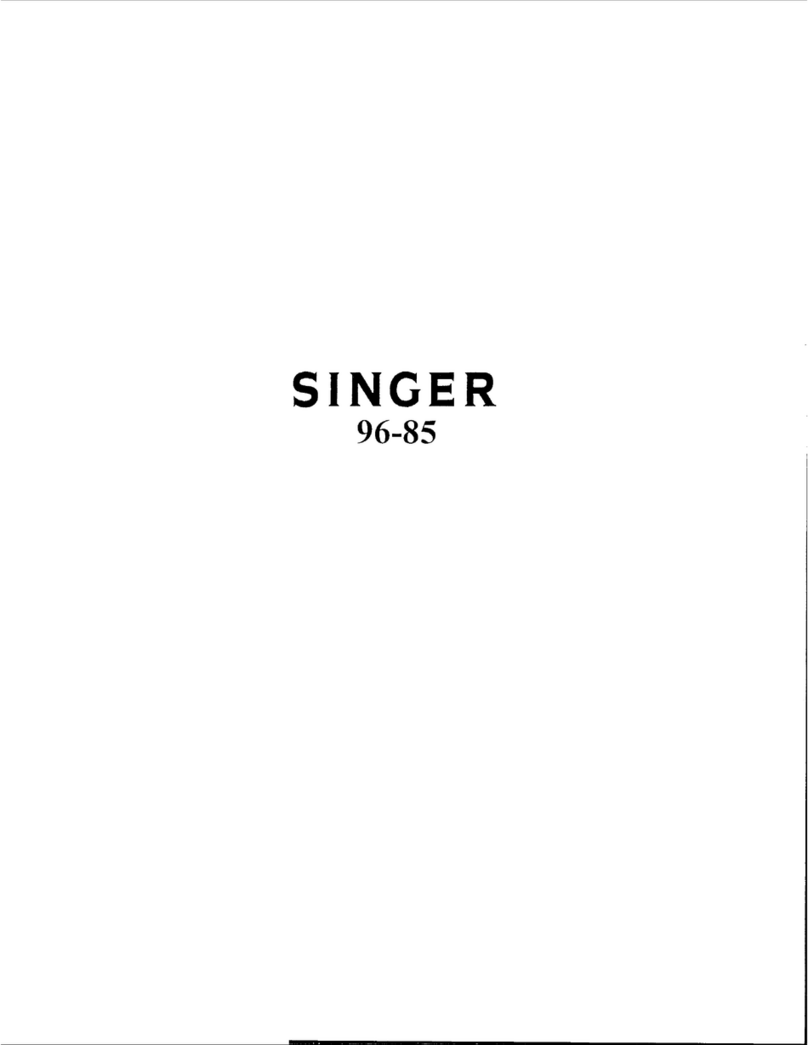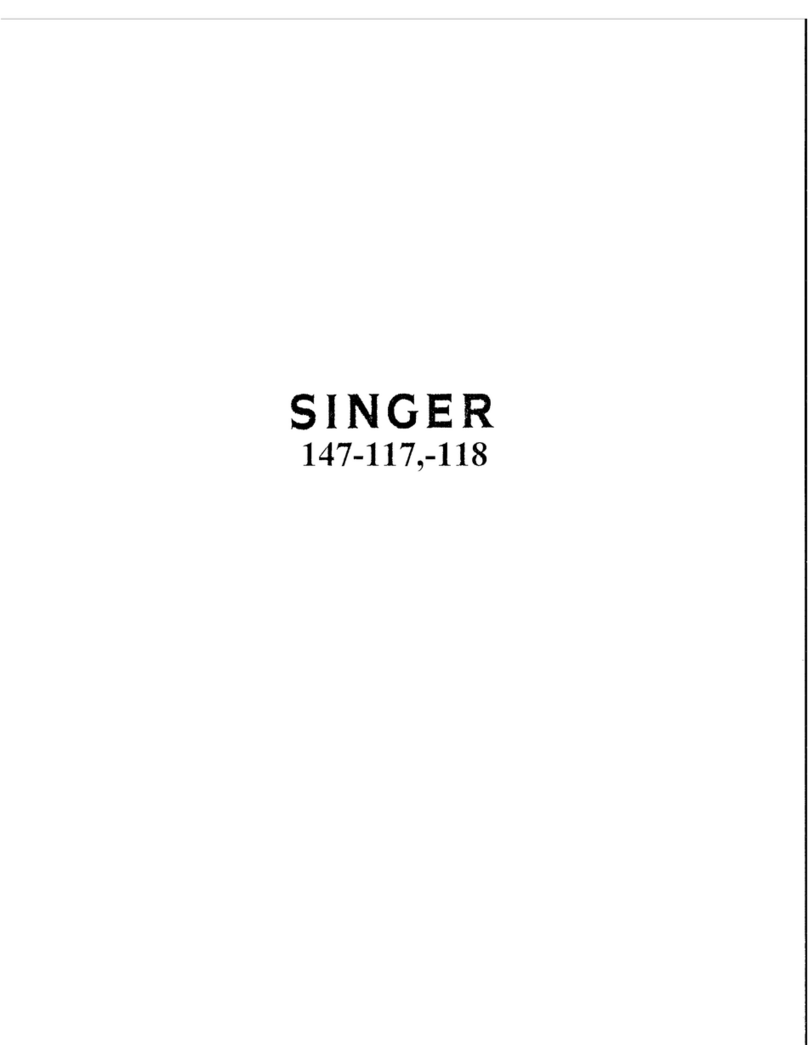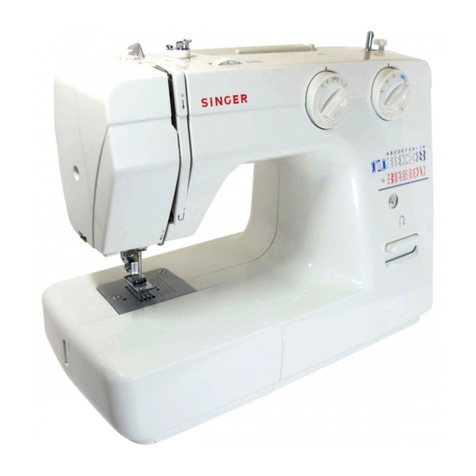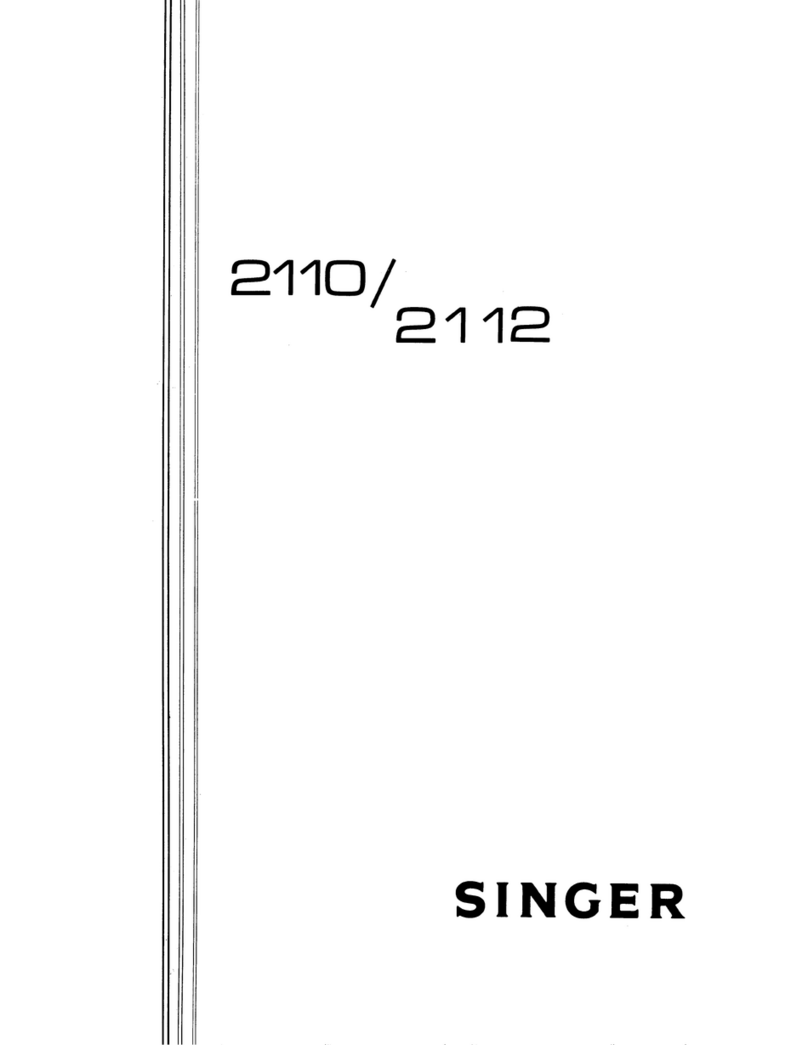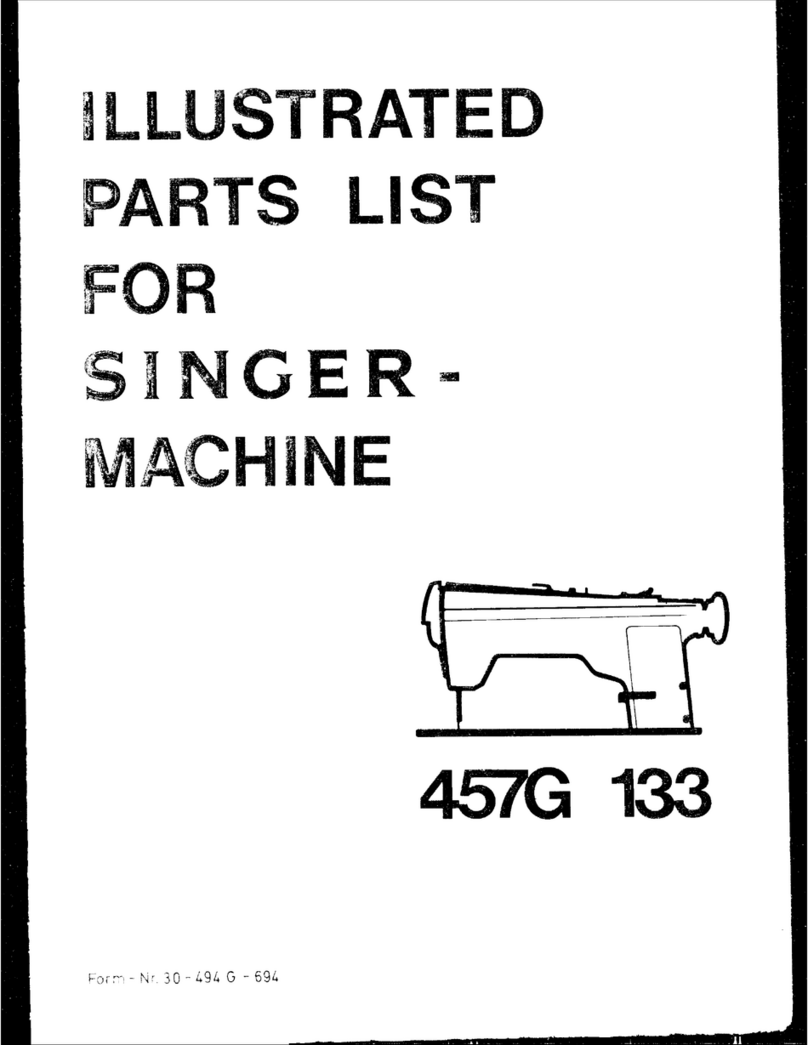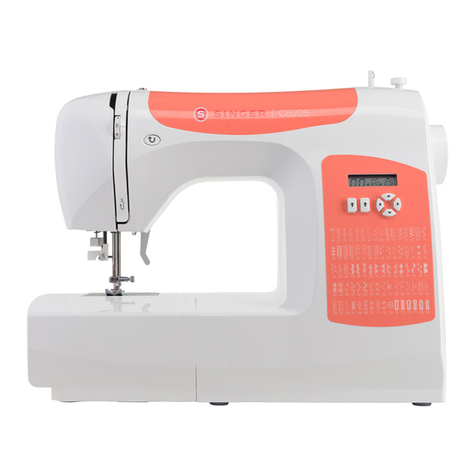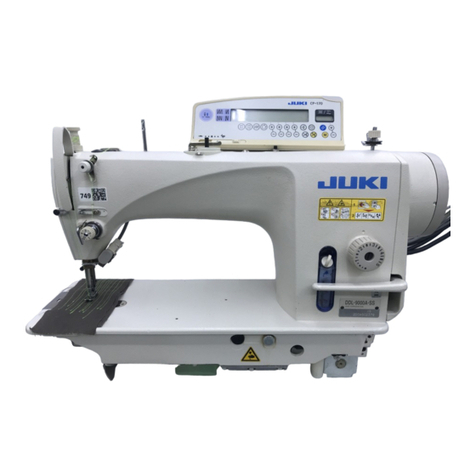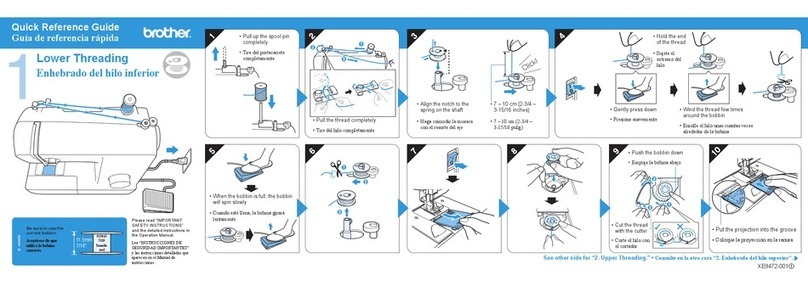
4
WARNING continued...
•Disconnect the power-line plug from the
socket outlet or switch the machine off when
making any adjustments in the needle area,
such as threading needle, changing needle,
changing throat plate or changing presser
foot, etc.
•Always unplug the machine from the electri-
cal outlet when removing covers, lubricating,
or when making any other user servicing
adjustments mentioned in the Operator's
Guide.
•Do not attempt to adjust the motor belt.
Contact your nearest Service Center should
any adjustment be required.
• Do not unplug by pulling on cord. To unplug,
grasp the plug, not the cord.
• Handle the foot controller with care and
avoid dropping it on the floor. Be sure not to
place anything on top of it.
•Always use the proper throat plate. The
wrong plate can cause the needle to break.
• Do not use bent needles.
• When sewing, keep fingers away from all
moving parts. Special care is required
around the sewing machine needle.
• Do not pull or push fabric while stitching. It
may deflect the needle causing it to break.
• Before removing the bobbin case, remove
plug from the socket outlet.
• For double insulated machines, when serv-
icing use only identical replacement parts.
• Never operate the machine if it has a dam-
aged cord or plug, if it is not working proper-
ly, if It has been dropped or damaged, or
dropped into the water. Return the machine
to the nearest authorized dealer or Service
Center for examination, repair, electrical, or
mechanical adjustment.
•Never operate the machine with any air
openings blocked. Keep ventilation open-
ings of the machine and foot controller free
from the accumulation of lint, dust, and
loose cloth.
•Never drop or insert any object into any
opening.
